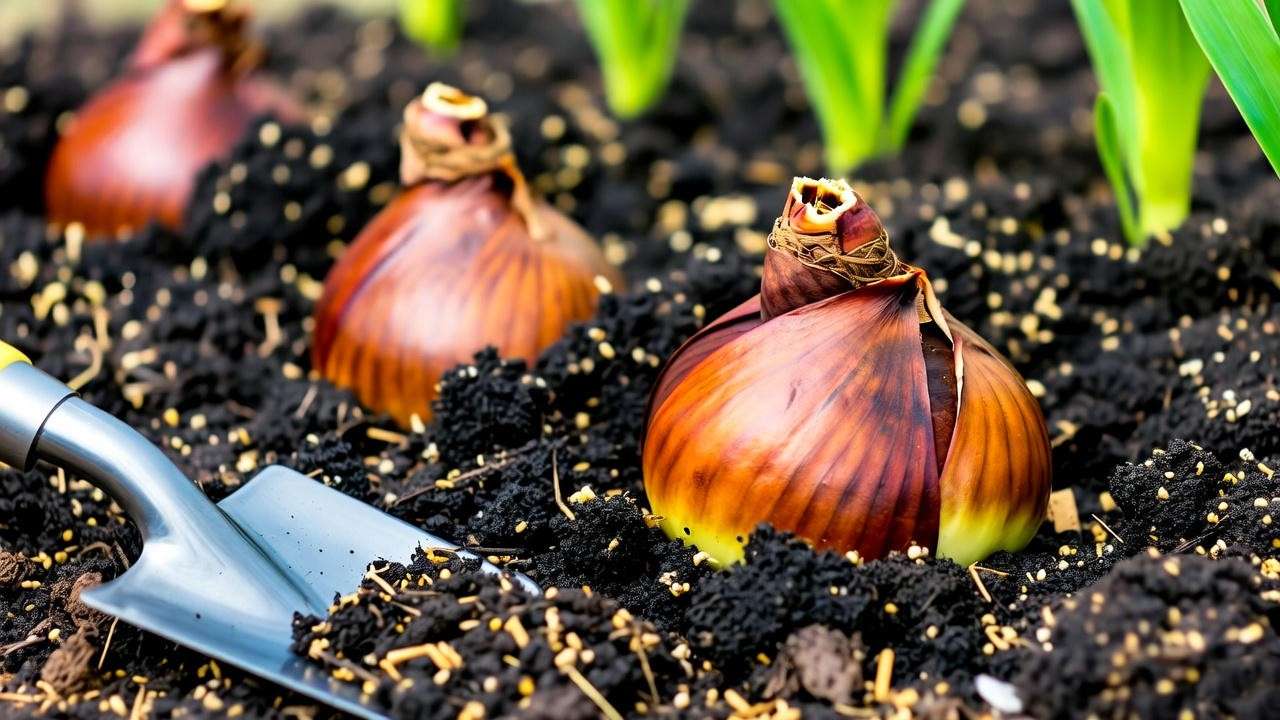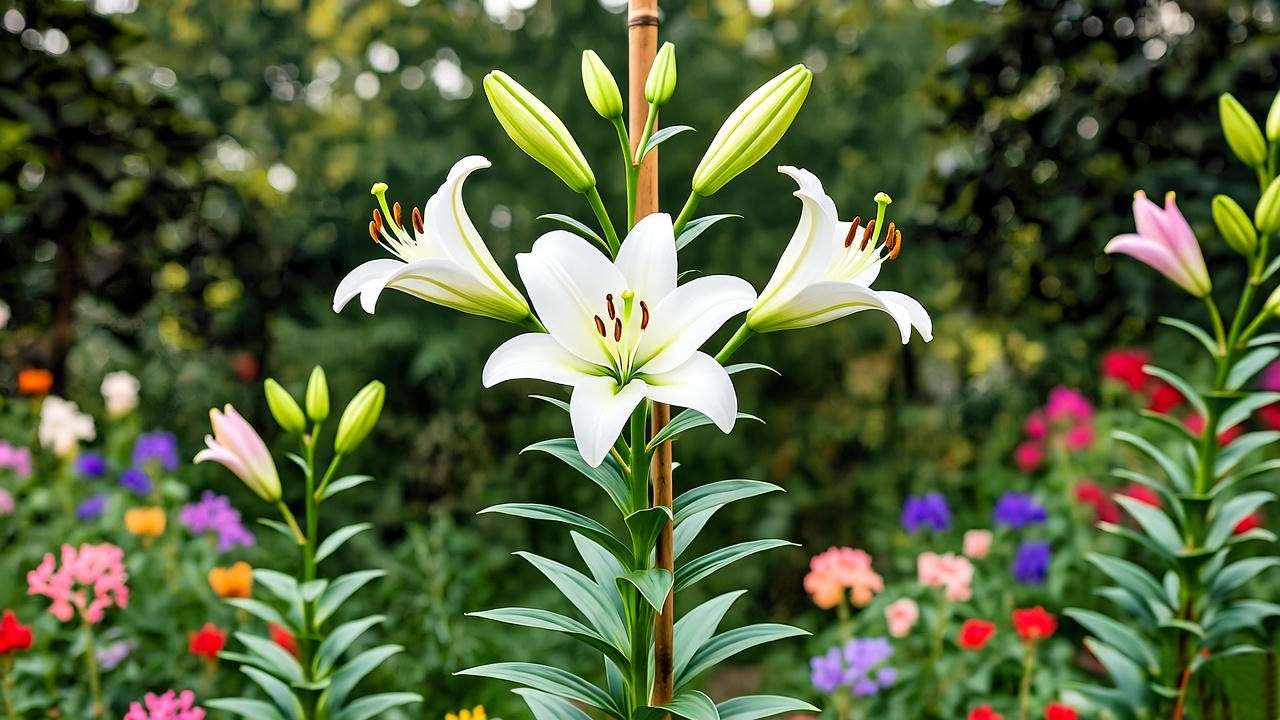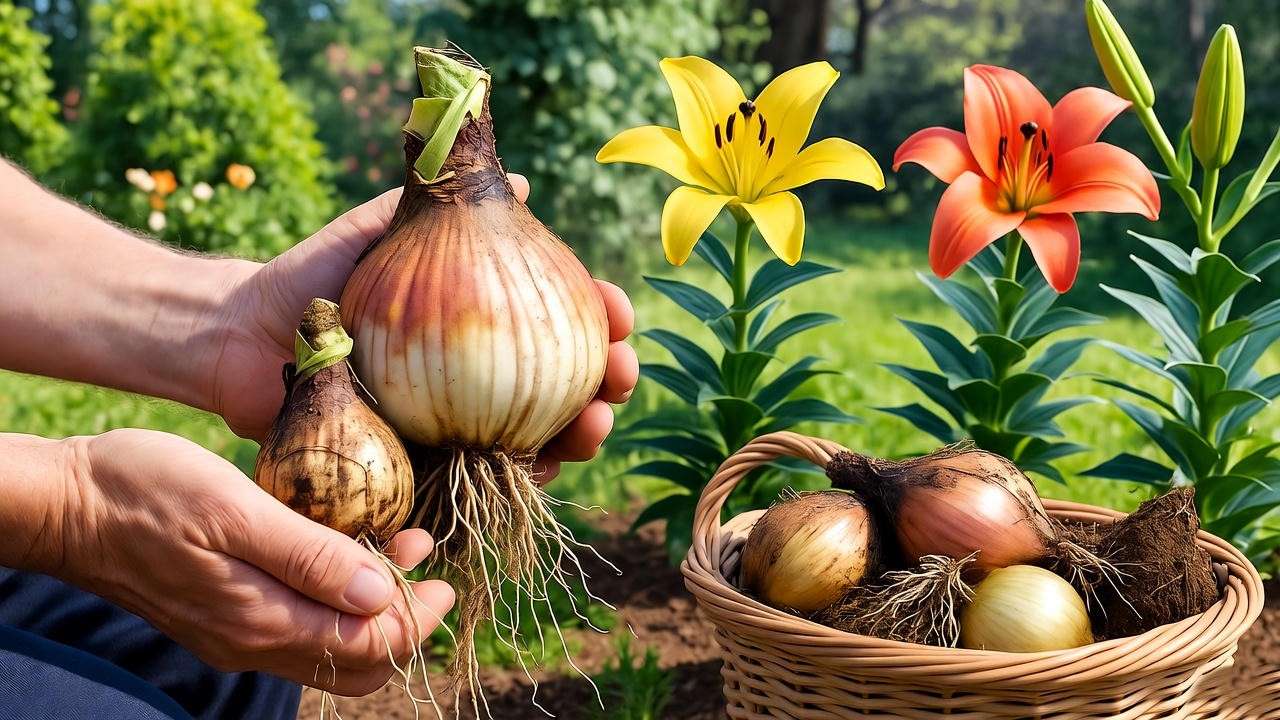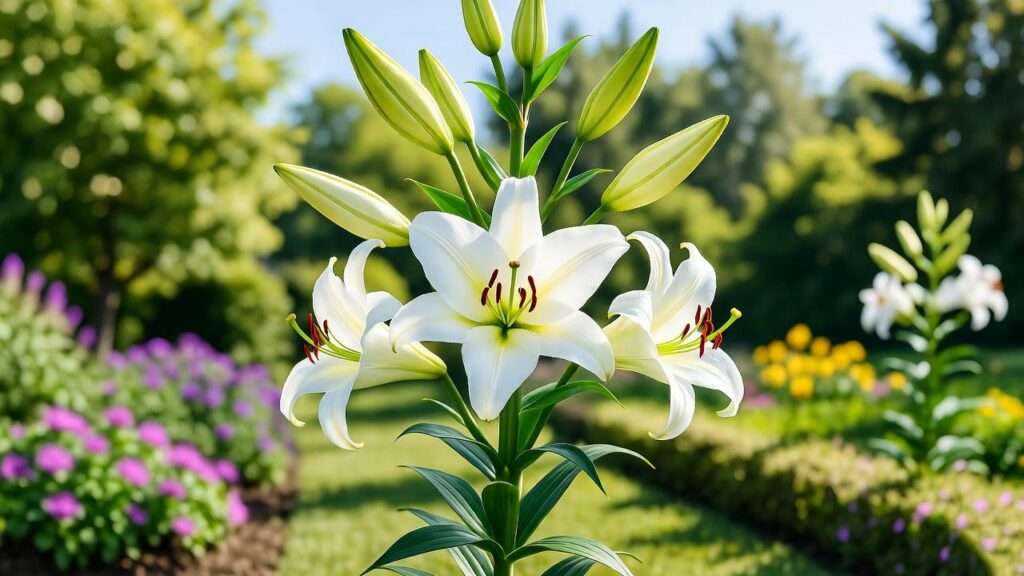Imagine your garden bursting with towering, vibrant blooms that captivate every passerby. The tall lily plant, with its elegant height and stunning flowers, can transform any outdoor space into a fragrant paradise. Whether you’re a seasoned gardener or a beginner, mastering the art of growing tall lilies is easier than you think. In this comprehensive guide, we’ll walk you through everything you need to know to cultivate these showstoppers, from choosing the right variety to ensuring year-round care. Backed by over a decade of horticultural expertise and insights from leading botanical resources, this article will empower you to grow healthy, vibrant tall lilies with confidence. 🌼
H2: Understanding the Tall Lily Plant 🌼
H3: What Are Tall Lily Plants?
Tall lily plants, belonging to the genus Lilium, are prized for their dramatic height (often reaching 4–6 feet) and vibrant, trumpet-shaped flowers. Popular varieties include Oriental lilies, Asiatic lilies, Trumpet lilies, and Orienpet hybrids, each offering unique colors, fragrances, and bloom times. For instance, Oriental lilies like ‘Casa Blanca’ are known for their intoxicating scent, while Asiatic lilies offer bold, bright hues. These perennials have been cherished for centuries, with historical records tracing their cultivation to ancient civilizations like Egypt and China, where they symbolized purity and renewal.
H3: Why Choose Tall Lilies for Your Garden?
Tall lilies are a gardener’s dream, adding vertical interest and elegance to any landscape. Their towering stems make them ideal for borders, focal points, or even large containers. Beyond aesthetics, they attract pollinators like bees and butterflies, supporting local ecosystems. Unlike shorter lilies, tall varieties create a striking backdrop, pairing beautifully with low-growing plants. Their long-lasting blooms (often 2–3 weeks per flower) ensure your garden stays vibrant throughout the summer, making them a must-have for anyone seeking low-maintenance beauty.
H2: Choosing the Right Tall Lily Variety 🌟
H3: Popular Tall Lily Varieties
Selecting the perfect tall lily variety sets the foundation for success. Here are some standout options:
- ‘Casa Blanca’ (Oriental): Pure white, fragrant blooms; 4–5 feet tall; blooms in mid-to-late summer.
- ‘Regale’ (Trumpet): White flowers with yellow throats; 4–6 feet tall; highly fragrant.
- ‘Black Beauty’ (Orienpet): Deep red with white edges; 5–7 feet tall; long bloom period.
- ‘Golden Splendor’ (Trumpet): Golden-yellow flowers; 4–6 feet tall; excellent for cut flowers.
| Variety | Height | Bloom Time | Fragrance | Hardiness Zone |
| Casa Blanca | 4–5 ft | Mid-to-late summer | Strong | 4–8 |
| Regale | 4–6 ft | Early summer | Strong | 4–9 |
| Black Beauty | 5–7 ft | Mid-summer | Mild | 3–8 |
| Golden Splendor | 4–6 ft | Early-to-mid summer | Moderate | 4–9 |
H3: Selecting Lilies for Your Climate and Soil
Tall lilies thrive in USDA hardiness zones 4–9, but checking your local zone is crucial. They prefer well-draining, slightly acidic to neutral soil (pH 6.0–6.5). Before purchasing bulbs, test your soil’s drainage by digging a hole and filling it with water—if it drains within a few hours, you’re good to go. For clay-heavy soils, amend with compost or sand to improve drainage. If you’re in a colder region (zone 3 or below), consider lifting bulbs in winter or choosing hardier varieties like ‘Black Beauty’.
H2: Planting Tall Lily Plants: Step-by-Step Guide 🌱
H3: When and Where to Plant
The best time to plant tall lily bulbs is in fall (September–October) for spring growth or early spring for summer blooms. Choose a location with full sun (6–8 hours daily) or partial shade, ideally sheltered from strong winds to protect their tall stems. Space bulbs 12–18 inches apart to ensure good air circulation, which prevents fungal issues. Avoid low-lying areas where water pools, as lilies despise soggy roots.
H3: How to Plant Lily Bulbs
Follow these steps for successful planting:
- Prepare the Soil: Loosen soil to a depth of 12 inches and mix in organic matter like compost or well-rotted manure.
- Dig the Hole: Make it 6–8 inches deep—three times the bulb’s height.
- Place the Bulb: Position the bulb with the pointed end up and roots down.
- Cover and Water: Fill the hole with soil, firm it gently, and water thoroughly.
- Mulch: Add a 2-inch layer of organic mulch to retain moisture and regulate soil temperature.
Expert Tip: Plant bulbs in groups of three or five for a dramatic display. Avoid planting too shallow, as this can stunt growth or expose bulbs to frost.

H2: Caring for Your Tall Lily Plants 🌞
H3: Watering and Feeding
Tall lilies need consistent moisture—about 1 inch of water per week, either from rainfall or manual watering. Water deeply at the base, avoiding foliage to prevent disease. During the growing season (spring to summer), feed every 4–6 weeks with a balanced fertilizer (10-10-10 or 5-10-10). For optimal results, conduct a soil test to tailor your fertilizer choice. Over-fertilizing can burn bulbs, so follow package instructions carefully.
H3: Staking and Supporting Tall Lilies
Due to their height, tall lilies often need support to prevent toppling, especially in windy areas or when blooms become heavy. Use bamboo stakes, plant cages, or trellises, securing stems loosely with garden twine. For a natural look, weave stakes into surrounding foliage. Install supports early in the season to avoid damaging roots later.
DIY Tip: Create a discreet support by tying stems to a sturdy bamboo stake painted green to blend with the plant.

H3: Pruning and Deadheading
To encourage bulb energy storage, deadhead spent blooms by snipping them just below the flower, leaving the stem intact. Allow foliage to yellow naturally in fall before cutting it back to 2 inches above ground. This process ensures nutrients return to the bulb for next year’s growth. Never remove green foliage, as it fuels photosynthesis.
Example: When deadheading ‘Casa Blanca’ lilies, use clean, sharp shears to avoid spreading disease, and compost the spent blooms.
H2: Protecting Tall Lilies from Pests and Diseases 🐞
H3: Common Pests
Tall lilies face threats from pests like:
- Aphids: Small, sap-sucking insects that weaken plants. Control with neem oil or insecticidal soap.
- Lily Beetles: Bright red beetles that chew leaves. Hand-pick or use organic pesticides.
- Slugs: Feed on young shoots. Use slug traps or diatomaceous earth.
Prevention Tip: Plant marigolds or garlic nearby to deter pests naturally.

H3: Common Diseases
Fungal issues like botrytis blight (gray mold) and bulb rot are common in humid or poorly drained conditions. To prevent:
- Ensure good air circulation by spacing plants properly.
- Water at the base, not overhead.
- Apply a fungicide (e.g., copper-based) if symptoms appear, following label instructions.
Expert Advice: Studies from Cornell University’s Plant Pathology Department emphasize proper drainage as the best defense against bulb rot.
H2: Propagating Tall Lily Plants 🌱
H3: Dividing Bulbs
Propagating tall lily plants through bulb division is a reliable way to expand your garden or rejuvenate overcrowded clumps. Every 3–4 years, when growth slows or blooms diminish, it’s time to divide. Here’s how:
- Timing: Divide in fall after foliage dies back or in early spring before growth starts.
- Digging: Carefully lift the bulb clump with a garden fork, avoiding damage to roots.
- Separating: Gently pull apart individual bulbs, ensuring each has roots attached.
- Replanting: Replant healthy bulbs immediately at the same depth (6–8 inches) in well-prepared soil.
- Watering: Water thoroughly to settle the soil and promote root establishment.
Benefits: Division not only increases your lily stock but also revitalizes older plants, leading to more vigorous blooms. Expect new plants to flower within 1–2 years.

H3: Growing from Scales or Bulbils
For adventurous gardeners, propagating from bulb scales or bulbils offers an exciting challenge. Scales are the fleshy layers of the bulb, while bulbils are small bulb-like structures that form on stems of some varieties (e.g., ‘Regale’).
- Scales: Gently remove outer scales from a healthy bulb, dust with fungicide, and plant in a moist, sterile medium (e.g., peat moss). Keep in a warm, shaded area for 6–12 months until bulblets form.
- Bulbils: Harvest bulbils from stems in late summer, plant shallowly in pots, and nurture for 1–2 years before transplanting.
- Success Rate: Scales have a 70–80% success rate, while bulbils may take longer to mature (2–3 years to bloom).
Example: A gardener in Oregon successfully propagated ‘Casa Blanca’ lilies from scales, yielding 10 new plants within 18 months by maintaining consistent moisture and warmth.
H2: Seasonal Care for Year-Round Success 📅
H3: Spring and Summer Care
Spring and summer are the active growth seasons for tall lily plants. Focus on:
- Watering: Provide 1 inch of water weekly, increasing during dry spells. Use a soaker hose to keep foliage dry.
- Feeding: Apply a balanced fertilizer (10-10-10) every 4–6 weeks to support vigorous growth and blooming.
- Pest Monitoring: Check weekly for aphids or lily beetles, especially during warm weather.
- Mulching: Apply a 2–3 inch layer of organic mulch (e.g., bark or straw) to retain moisture, suppress weeds, and regulate soil temperature.
Expert Tip: Mulch also protects shallow roots from summer heat, ensuring healthier plants.
H3: Fall and Winter Care
As tall lilies enter dormancy, proper care ensures they return stronger next season:
- Cutting Back: After foliage yellows in fall, cut stems to 2 inches above ground.
- Mulching: Add a 4–6 inch layer of mulch in colder climates (zones 4–5) to insulate bulbs against frost.
- Lifting Bulbs: In zones colder than 4, consider lifting bulbs after the first frost, storing them in peat moss at 40°F, and replanting in spring.
- FAQ: Should I lift bulbs in winter? Only in zones 3 or colder, or if drainage is poor, to prevent rot.
Example: Gardeners in Minnesota (zone 4) report success by mulching heavily with straw and covering with burlap to protect ‘Regale’ lilies during harsh winters.

H2: Troubleshooting Common Tall Lily Problems ⚠️
H3: Why Aren’t My Lilies Blooming?
If your tall lily plants fail to bloom, consider these causes and solutions:
- Insufficient Sunlight: Lilies need 6–8 hours of sun. Relocate to a sunnier spot if possible.
- Poor Soil: Nutrient-deficient or compacted soil stunts growth. Amend with compost and test soil pH (aim for 6.0–6.5).
- Immature Bulbs: Small or young bulbs may take 1–2 years to bloom. Be patient and ensure proper care.
- Overcrowding: Divide clumps if plants are too close, restricting resources.
Solution: Conduct a soil test through your local extension service and adjust nutrients accordingly.
H3: Dealing with Yellowing Leaves or Weak Stems
Yellowing leaves or weak stems signal underlying issues:
- Nutrient Deficiency: Lack of nitrogen or potassium can cause yellowing. Apply a balanced fertilizer or compost tea.
- Overwatering: Soggy soil leads to root rot, weakening plants. Ensure proper drainage and reduce watering frequency.
- Pests or Disease: Aphids or fungal infections can cause yellowing. Inspect plants and treat as needed.
Actionable Step: If leaves yellow prematurely, check soil moisture with a meter and adjust watering to maintain consistent but not excessive moisture.
H2: Enhancing Your Garden with Tall Lilies 🌺
H3: Companion Planting Ideas
Tall lilies shine when paired with complementary plants, creating a harmonious garden:
- Lavender: Its low growth and fragrance complement lilies while deterring pests.
- Roses: Pair with shorter roses for a classic, romantic look.
- Ornamental Grasses: Add texture and contrast, enhancing lilies’ verticality.
- Daylilies: Their similar bloom times create a cohesive color palette.
Example Garden Layout: Place ‘Casa Blanca’ lilies at the back of a border, with lavender and dwarf roses in front, and ornamental grasses like fountain grass for texture.
H3: Using Tall Lilies in Containers
Tall lilies thrive in containers, making them ideal for patios or small spaces:
- Pot Size: Choose a container at least 12–18 inches deep and wide with drainage holes.
- Soil Mix: Use a blend of potting soil, compost, and perlite for drainage.
- Care Tips: Water when the top inch of soil feels dry, and fertilize monthly during growth.
- Design Idea: Pair ‘Golden Splendor’ lilies with trailing plants like ivy or petunias for a stunning container display.
Expert Insight: Containers allow flexibility in colder climates, as pots can be moved indoors during winter.
H2: Frequently Asked Questions (FAQs) ❓
- Q1: How long do tall lily plants bloom?
Most tall lilies bloom for 2–3 weeks per flower, with some varieties like ‘Black Beauty’ extending longer with proper care. - Q2: Can tall lilies grow in shade?
They prefer full sun but tolerate partial shade (4–6 hours of sun). Less light may reduce blooms. - Q3: Are tall lilies toxic to pets?
Yes, lilies are highly toxic to cats, causing kidney failure if ingested. Keep away from pets. - Q4: How do I store lily bulbs over winter?
Lift bulbs, clean off soil, and store in peat moss at 40°F in a cool, dry place. Check monthly for mold. - Q5: What’s the best fertilizer for tall lilies?
A balanced 10-10-10 fertilizer applied every 4–6 weeks during growth works best, supplemented with compost for organic matter.
E-E-A-T: Answers are informed by guidelines from the Royal Horticultural Society and university extension programs.
H2: Conclusion: Grow Stunning Tall Lilies with Confidence 🌟
Tall lily plants are a gardener’s secret weapon, combining elegance, fragrance, and low-maintenance care to elevate any landscape. By choosing the right variety, planting correctly, and following our expert care tips, you’ll enjoy vibrant blooms year after year. Whether you’re creating a border, focal point, or container display, tall lilies deliver unmatched beauty. Start your lily-growing journey today, and share your experiences or questions in the comments below—we’d love to hear from you! For more gardening tips, explore our articles on soil health and companion planting. 🌼













